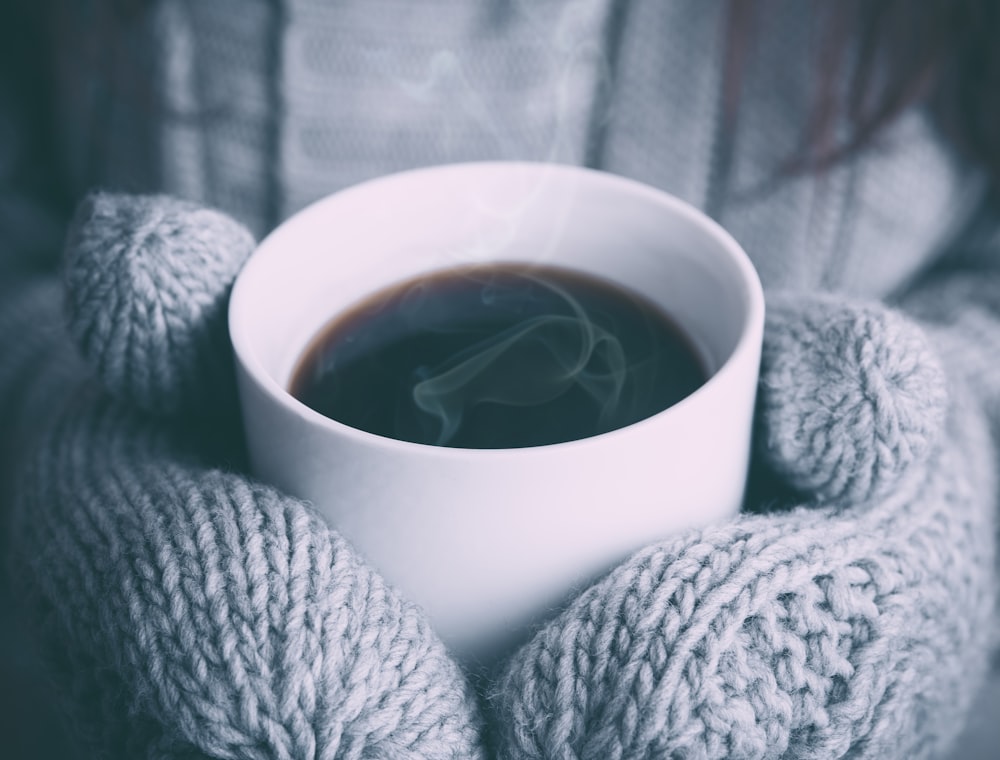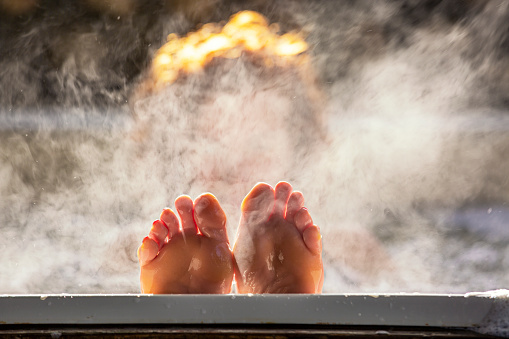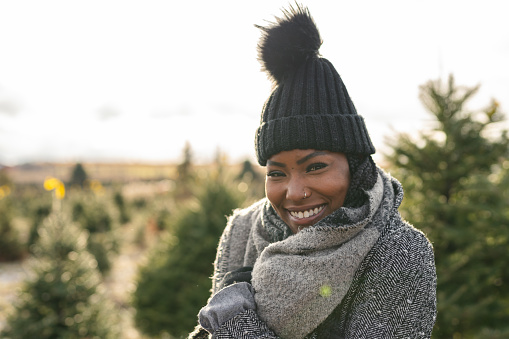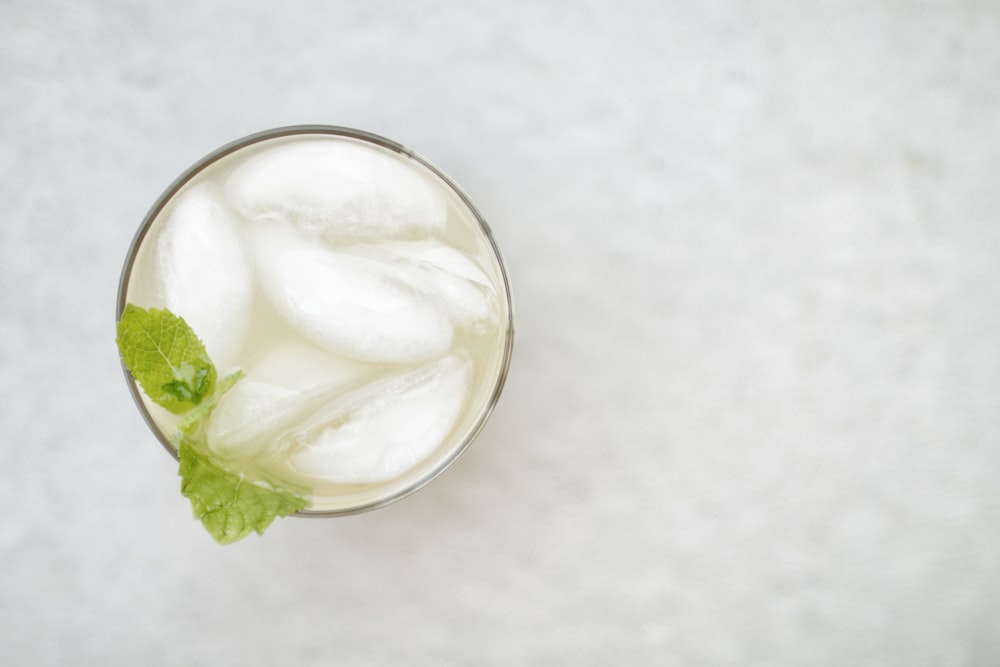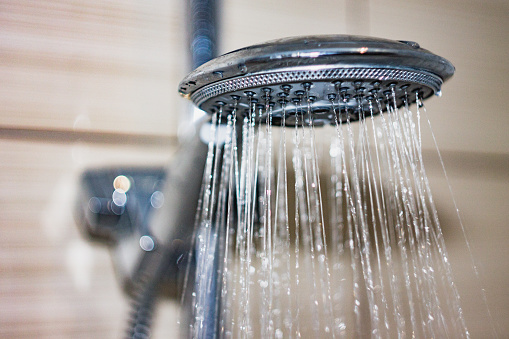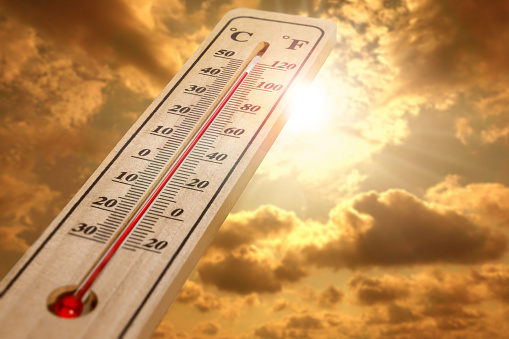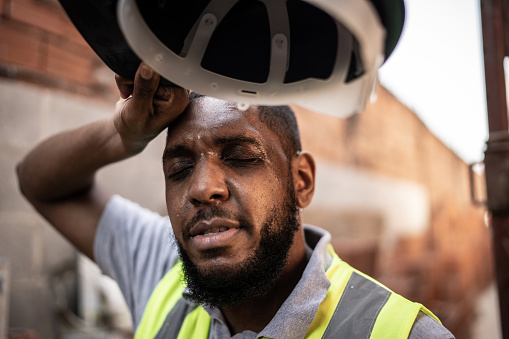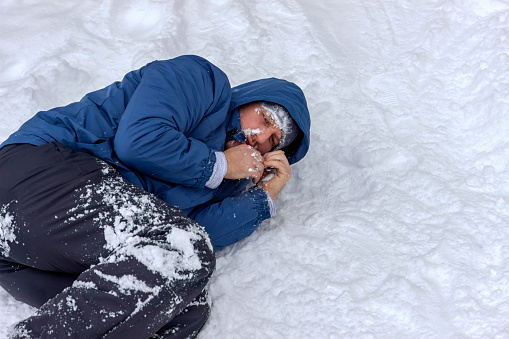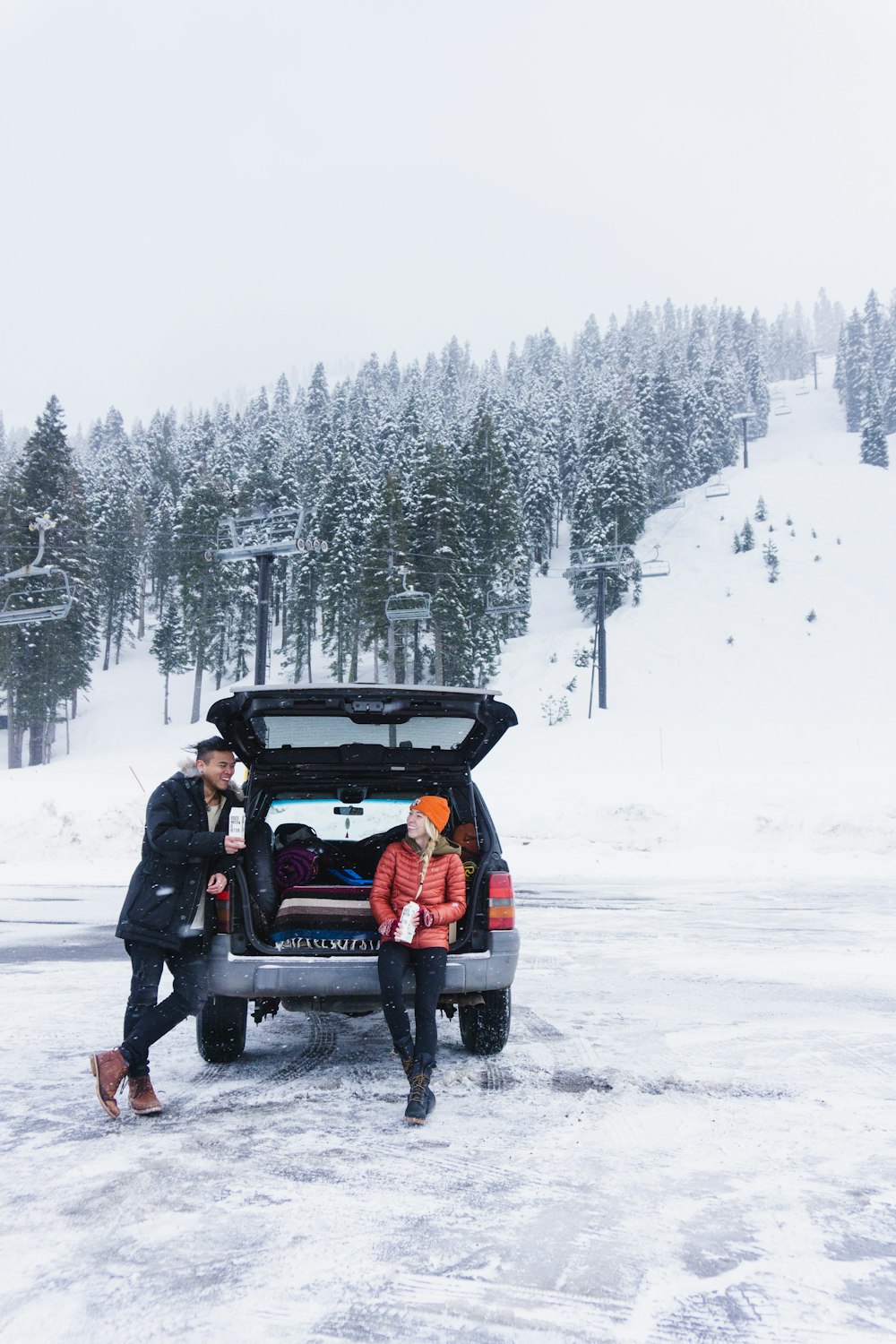How Does the Body Regulate Temperature?

Ever wonder how your body regulates its temperature? Whether you are walking in the snow, under the sun or shade, feeling hot or cold, your body is always trying to maintain a stable internal temperature. It can fluctuate a few degrees, but your body's goal is to stay around 98.6 degrees Fahrenheit (37 degrees Celsius).
Temperature regulation
There are many factors that go into how the body regulates its temperature. The hypothalamus, a part of the brain, helps to control body temperature. It receives information from the skin, muscles and blood vessels about what the current temperature is. It also monitors how active you are and sends signals to the muscles to produce or release heat.
When it is cold outside
When it is cold outside, your body tries to conserve heat by releasing less sweat and sending more blood flow to vital organs such as the heart and brain. You might also shiver, which is when your muscles contract rapidly in order to create heat.
When it is warm outside
When it is warm outside, your body tries to cool down by releasing more sweat and sending less blood flow to the vital organs. You might also feel lethargic and have a lower body temperature.
How to help your body regulate its temperature
There are many ways you can help your body regulate its temperature. Here are some of the most common ways:
During cold weather:
When the weather is chilly, like during the snow season, the body is more vulnerable to hypothermia. To avoid this, try the following:
1. Wear warm clothing
Wearing warm clothing will help trap the heat close to your body. Warm clothing includes clothes that are made of materials such as fleece or wool. These types of fabric trap heat, insulate the skin and keep the body warm.
Still wondering how? The answer is found in the fibres' crimp. The ability of wool to react to changes in the body temperature due to small pockets of air within the fibres that transport heat distinguishes it from other textiles. When your body is chilly, wool keeps you warm; when it's hot, wool keeps you cool.
Fleece, which is a synthetic material is much like the insulation in a home, it has air pockets that trap heat. Similar to wool, fleece is excellent for trapping body heat while still being gentle on the skin. It also helps the body remain warm because of its thickness.
2. Drink warm liquids
This will help raise your internal temperature. How? Warm beverages are an effective way of transferring heat into your body.
When you drink something and it goes into your stomach, the heat from the liquid goes into your body by conduction. Conduction is the transfer of heat from one object to another by direct contact. It is also an effective way for your body to get warm when you're in a cool environment and it's cold out.
3. Avoid getting wet
You don't want to get wet because when you are soaked in water due to rain or snow, you will lose most of your body heat through evaporation. Evaporation is the process by which a liquid changes into a gas. You can avoid getting wet by wearing waterproof or windproof clothing and staying under shelter when it's snowing or raining.
4. Stay in a heated environment
Being in an environment with heat sources will also help raise your body temperature. You can set indoor heaters at temperature settings that you're comfortable with.
If you can't raise the temperature enough, get a blanket and wrap yourself up to stay warm. You can do this while working on your laptop or watching TV.
5. Do activities that will make you sweat, such as exercise
If you can't go outside, try doing some exercises inside where it's warm. When you are moving your body, you will produce lots of heat by sweating and through various chemical reactions that are happening in your cells. In addition, if you wear warm clothes while exercising, your body will stay warmer for longer.
6. Stay active, do something besides exercise
Even when it's cold outside, you can still be active by going for a walk or doing household chores. You can also stay active indoors by organizing your closet or doing some yoga.
7. Take a warm bath
Besides keeping your body warm, taking a warm bath is a great way to relax.
It will aid in raising your body temperature as you stay in a warm bath or if you let a warm shower wash over your skin.
The science behind it is simple, like how you drink warm liquids when you take a bath, the heat gets transferred via conduction.
8. Use a heating pad
If you don't feel like taking a warm shower but you are feeling cold, you can use a heating pad to warm up your body. You can place it in your abdomen neck, feet or anywhere else you feel cold. However, the best place to put it is on your back and let the heat to spread throughout the rest of your body. If need be, reheat the heating pad then place it on areas where you feel cold.
A heating pad provides a low-level heat that will help raise your skin temperature through conduction and convection by adding warmth to the air around you.
Heating pads are also safe to use because you control the temperature of the pad. Its temperature remains constant even if it is plugged in for hours, which makes it effective at soothing muscle aches and pains, menstrual cramps, or headaches.
Although, heating pads aren't perfect for everyone as they can lead to burns for people with thinner skin or people who have sensory problems that make them unable to feel the pain.
It is also important to place heating pads for only a few minutes to take breaks in between applications to avoid burns. Even though heating pads are relatively safe to use, they should not be used for more than 45 minutes at a time because they can damage your skin if you leave them on for too long.
9. Put on a tuque or a beanie
Keep your ears and head warm by wearing a hat. This will help your body to maintain its temperature and prevent headaches triggered by cold weather conditions. In addition, your head controls a lot of the blood flow in your body. If you keep it warm with a hat or beanie, then the rest of your body will be able to receive more blood flow and remain warm.
10. Wear a scarf when outdoors
When going outside, wear a scarf to protect your neck from the cold since this is one of the areas where your body significantly loses heat from. If the neck area is cold, the rest of your body will also feel colder.
11. Use hand warmers
Do you want something to keep your hands warm while outside or when it's snowing? You can use hand warmers. Hand warmers are small packets that contain chemicals heated by exothermic oxidation reactions whose heat helps keep air pockets in the hands warm.
The heat that comes from hand warmers is not enough to burn you or harm your skin, even if it's used for more than three hours at a time. However, you should be careful when using them because they can cause discomfort and some electric-powered ones can harm you if left too long without use.
12. Layer up before going outside
You should always wear several layers of clothing to stay warm when it's cold outside because the air pockets in between the layers protect you by trapping air.
Wear a base layer made from a cotton/polyester blend next to your skin to absorb sweat and move it away from the body. Also wear a mid-layer insulating garment that is mainly for providing warmth, such as a fleece or wool jumper. Lastly, wear an outer weather-resistant shell layer on the outside to shield you from rain and wind.
When you layer up before going outside, don't forget your socks. Wear two pairs at once so that the outer pair helps keep your foot dry and warm while the inner pair provides moisture management which keeps odour-causing bacteria away.
During warm weather:
There are many things you can do to help your body stay cool:
1. Drink plenty of fluids.
Getting enough fluids will help you cool down. When it is warm, there is an increased risk of dehydration. Getting enough fluids will keep the cells in your body hydrated. Water is the best choice, even though you may prefer other beverages like juices or sodas. When it is hot outside, limit your intake of caffeine-based drinks because they can cause dehydration.
2. Wear lightweight, loose-fitting clothing.
This will allow your skin to breathe and will help keep you cool. Tight and loose-fit clothing will keep your body cool. Choose light-coloured clothes as well because they reflect sunlight, which reduces the amount of heat from the sun reaching your skin.
Light-coloured clothes do not absorb heat as much as dark-coloured clothes, so light clothing keeps your body cooler. Although darker clothes may keep you warmer when it is cold, they also absorb more heat from the sun than light clothes.
3. Stay in the shade.
Direct sunlight can raise your body temperature. When you are outside on a hot sunny day, find shade under trees or umbrellas to protect yourself from the sun's rays and stay as cool as possible.
If you can't afford an indoor space to go to, look for a place where the temperature is cooler. For example, a shady spot on a street corner may be less crowded than inside your house or office so that you can avoid being too warm while indoors. If it is really hot outside, just stay at home because there isn't much you can do outside temperatures soaring above 32°C.
So rest in a cool place. Find a shady spot or go indoors to rest.
4. Get into the water.
Go swimming or taking a bath can help you cool down. You can also douse your head with cold water to reduce body temperature quickly. It's more effective if you do so first thing in the morning because you have been sleeping all night and aren't as active, which means your daytime body temperature is lower than usual so you don't need as much cooling off. 5. Take a break from exercising outside. When it's hot outside exercise becomes harder and more difficult for your cardiovascular system to handle, which is why it's important to take frequent breaks every 10 minutes (or more often if possible) when exercising outdoors during warm weather conditions.
5. Drink cold beverages.
This will cool down your internal temperature. Water is the best drink for cooling down quickly. Other beverages like juices or sodas are OK too, but they should not replace water. Drinking cold fluids can cause your body temperature to drop even lower than it already is in a very short amount of time.
6. Stay in an air-conditioned environment
This will help keep you cool. If you can't afford air conditioning, open your windows and use a fan to circulate the air inside. If you have a swamp cooler or evaporative cooler in your home, use it when it's warm outside because these appliances work by pulling in cool air from outside and pushing out warm air from inside. Using a fan is also beneficial. It blows air on your skin so it can cool down faster.
7. Take a cool shower or bath.
This will help you cool down quickly and will keep your body hydrated since water is essential for all living things.
After you take a bath, remain in the room until your body temperature returns to normal. Then only go back into the sun if necessary.
8. Stay out of the sun as much as possible
Exposure to the sun can make you feel warm and can cause dehydration. This increases your risk of heat stroke or heat exhaustion. If it is very hot outside, spend time in the shade where it is cooler. The sun can heat up your body and make you feel even warmer.
8. Dress appropriately
In addition to dressing in light, loose-fitting clothing, you can wear a hat to protect yourself from the sun and keep your head cool. Don't forget sunscreen too because it helps prevent your skin from over-heating and can help reduce swelling and redness if you do get burned.
9. Program the thermostat
Program your home's thermostat so that when you are out of the house or at night when you are sleeping, the air conditioner goes on to lower the temperature inside your house by several degrees so that when you return home or wake up, it is cooler than usual indoors which will help cool down your body quickly after being exposed to high temperatures outdoors. This way, your system won't have to work as hard to cool down your body.
10. Avoid eating spicy or greasy foods
Both spicy and greasy foods can cause indigestion, which will make you feel warmer because the digestive system uses a lot of energy for this process.
11. Limit outdoor activities when it's hot
When it is hot outside, limit your time spent outside including taking your dog for a walk or going jogging in the park. When exercising indoors or outdoors, be sure to drink cold water every 10 minutes during exercise so that you remain hydrated and don't become dehydrated from losing fluids through excessive sweat.
12. Be prepared with an emergency plan for heat emergencies (heat stroke)
Be familiar with warning signs like muscle cramps, heavy sweating, nausea, dizziness and a rapid heartbeat. If you start experiencing any of these symptoms when it's hot outside seek medical attention immediately because they may be the first signs that you have heat stroke which is a life-threatening illness.
A person can suffer from heatstroke if their body temperature rises above 103 degrees Fahrenheit (39 Celsius). Exercising in hot weather, drinking alcohol or caffeine and having health problems like severe asthma or liver disease puts you at greater risk for heatstroke if you are not mindful to take frequent breaks. Taking breaks will also help ensure that you don't become dehydrated too quickly during periods of extreme temperatures.
Heatstroke must be dealt with quickly so go to the hospital immediately after calling 911!
13. Have a go-bag and/or emergency kit
Have a bag or box containing the items you would need in an emergency, such as sunscreen, reading material, water and snacks. Taking steps now to stay prepared will help you be ready for any type of heat emergency.
When you're at home, prepare a list of contingency plans in case anything goes wrong when it's hot outside. If your air conditioning and/or heat don't work in extreme temperatures, be sure to keep doors and windows closed so that conditioned air doesn't escape and make others uncomfortable. Also, if you live alone help is only a phone call away. Be familiar with local relief centers in your area where people can go during periods of high temperature if they don't have access to cool areas like their own homes.
14. Never leave children or pets inside a parked car
Leaving kids or pets inside a parked car can lead to hyperthermia (over-heating). Even on mild days, temperatures inside a parked car can quickly rise to dangerous levels. If you see children or pets left inside a parked car call the police immediately!
15. Never drink alcohol outside
Alcohol consumption raises your body temperature since it dehydrates you and is one of the leading heat-related weather fatalities. If you are an alcoholic who likes to drink alone outdoors, take frequent breaks if possible because alcohol also impairs judgment which will make you unaware that you're getting dehydrated more rapidly, putting yourself at risk for hyperthermia.
Hyperthermia and hypothermia, what are they?
As the weather starts to change, it's important to be aware of the dangers of both hyperthermia and hypothermia. These conditions can be harmful if not treated properly, so it's important to know what to look for and how to stay safe.
What is hyperthermia?
Hyperthermia is a medical term for higher than normal body temperature. This usually occurs due to prolonged exposure to the sun, but it can also be caused by high fever or strenuous exercise.
What are the symptoms of hyperthermia?
- An increase in sweating
- Muscle cramps
- Nausea and vomiting
- Weakness and fatigue
- Changes in behaviour (such as confusion)
Other symptoms associated with hyperthermia include headache, rapid breathing and heartbeat, muscle weakness, dizziness, confusion and unconsciousness.
Watch for symptoms in others, especially if they are working or exercising in a hot environment without adequate fluid intake. If you notice symptoms in someone else, seek medical help immediately.
What are the causes of hyperthermia?
There are several causes of hyperthermia, including:
- Hot weather
- Excessive exercise
- Fever
- Drug or alcohol overdose
- Infection
What is hypothermia?
Hypothermia is a medical term for decreased body temperature. It occurs when the temperature of your body drops below 35°C (95°F). It most often develops over an extended period of time, during which you are exposed to cold weather or water.
Symptoms of hypothermia include:
- Shivering
- Cold skin that may appear pale or blue
- Slowed heart rate
- Confusion
- Difficulty concentrating on tasks
Other symptoms of severe hypothermia may include drowsiness or sluggishness, slurred speech, difficulty moving around and feeling sad/depressed. If you notice any of these symptoms in someone, they might be suffering from hypothermia.
What are the causes of hypothermia?
Hypothermia happens when your body loses more heat than it produces. It can happen suddenly or over time, depending on what is causing your lowered core temperature. The most common causes of hypothermia include:
- Prolonged exposure to cold weather or water without proper protection
- Failure to keep properly hydrated
- Exposure to a cold environment after taking certain medications
- Poorly controlled diabetes
- Hypothyroidism (a condition that affects hormone production in the thyroid gland)
Help your body!
The body is constantly trying to regulate its temperature. But there are some things you can do to help your body out, like dressing in layers or wearing wool socks when it is too cold outside. You can also wear hats to protect your head, which is one of the most important ways heat leaves the body.
We hope you learned something from this article, and please don't forget to share it with others along with your thoughts on the topic.


